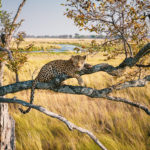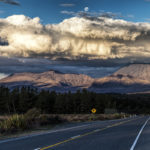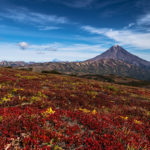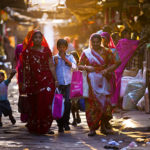Coconuts and Corals – The Pacific Islands
To many people the Pacific paradise of the South Seas islands was and still is one of the most exciting dream destinations. There is no question that experiencing typical advertisement-like stereotypes such as snow-white beaches, coconut palm trees and crystal clear blue-turquoise water in person is a lifetime experience par excellence. Though the South Seas true gem is a varicoloured dialogue taking place between the locals, their fascinating tribal culture and a diverse unique nature that is captivating above as well as below the sealine. That beautiful togetherness gets only disturbed when the Earth’s most powerful forces get unleashed, when at the Pacific side of our planet all things called tectonics and volcanism are literally setting the place on fire as Oceania is part of the highly active circum-pacific Ring of Fire.
The dream called South Seas is built on things: On the people’s friendliness that stood the test of millenniums, but also on the myths of old men getting spread many many years ago and being a nowadays advertising promise. That dream called South Seas had been shattered and doesn’t exist anymore as nowadays South Pacific has arrived present age, with internet, lovely capitalism, fast food as well as a tremendous garbage problem. At some places all civil problems seems to come together at once. The arrival of the white man is the reason why, at it meant a radical change to South Seas’ culture as well as environment. Both things were brought to the brink of extermination, nature by cats and dogs, culture by Christianisation and colonisation. Though there are some authentic places left being able to make you having the dream of the South Seas.
| Melting Pot of the South Seas | ||
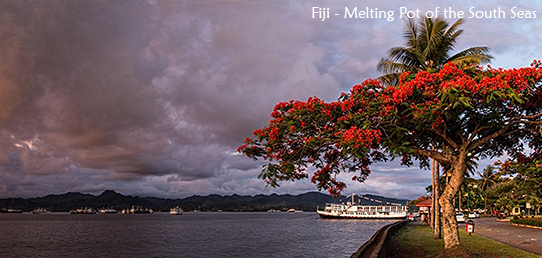 |
||
| The Fiji archipelago is the perfect melange of already four different words: Melanesia, Polynesia, India and colonial times. Suva’s saturday market, the old town of Levukas as well as the Naag Mandir Hindu Temple on Vanua Levu tell the story of this high in contrast togetherness. | ||
| Living along a Landing Strip | ||
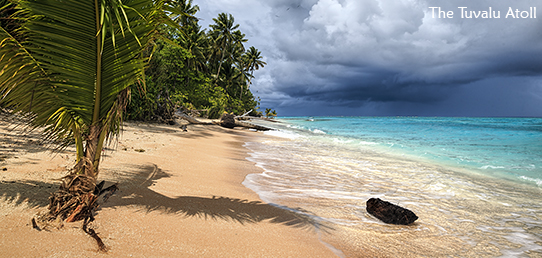 |
||
| Tuvalu is an archipelago amidst the wide blue Pacific Ocean and one of the smallest countries in the world and is made of atolls, fine and fragile rings of corals. One of those rings is the Funafuti lagoon and its main islands Fongafale, where embraced by the raging ocean human life settled down even directly at the nation’s most important connection to the rest of the world, the airstrip. | ||
| In the Homeland of the Kagu | ||
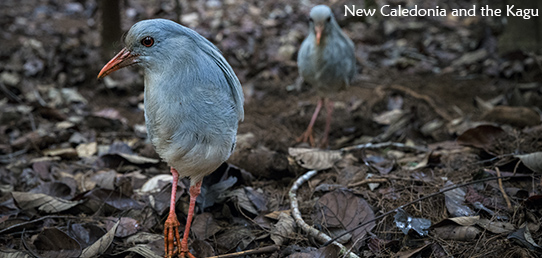 |
||
| Following the course of the Melanesian islands clockwise, then the last piece of the chain is the French overseas department New Caledonia. The island has scenic gems on offer like places where razor-sharp rocks tear waves apart, where dammed lakes dry out and reveal the submerged or where the colours of the Earth crop out unhidden. Though that place is also a prime example how the human invaded the eco and social systems of the South Pacific, in a maximally invasive and arrogant way; something that for example cut down the population of the ground-breeding Kagu | ||
| Where the time begins… | ||
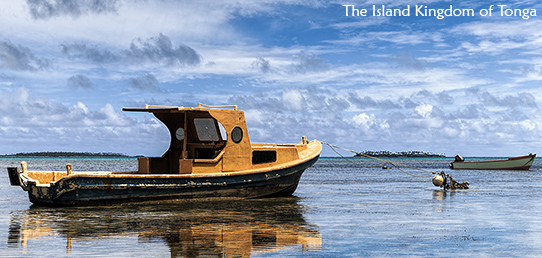 |
||
| The Island Kingdom of Tonga is located right at the Internation Date Line. There starts the day, according to the calendar. The archipelago was never colonialised, hence important Polynesian cultural assets (and there is not much left in general…) like the Ha’amonga Trilithon could survive. But it’s also spectacular in terms of nature as its home to Flying Foxes, blow holes as well as the magic Anahulu Cave. | ||
| Rumbling Rabaul | ||
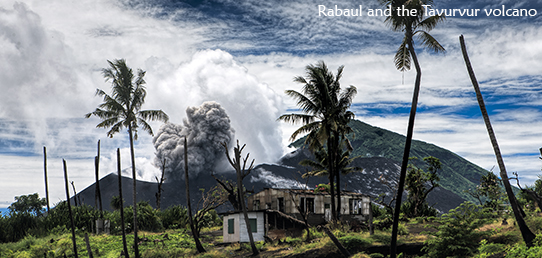 |
||
| The attribute ‘remote’ would be a pretty benevolent characterisation for the world’s third largest insular state Papua New Guinea. On the other hand that is surely one of the main reasons why over there a distinctive and vivid tribal culture and a unique flora and fauna could have developed and survived. Also for Papua’s isolated tropic islands volcanism and tectonics are playing a major role. Being located at or even right on the trench lines of several bordering microplates, earth as well as sea quakes are a daily occurrence as well as volcanic eruptions. At places like the spectacular Rabaul Caldera the volcanic boiling pot becomes evident not only by volcano Tavurvur but also in geothermal manner. However, it is basically the Tavurvur whose highly explosive and furious eruptions are taking influence on the life and nature of Gazelle peninsula, the eastern-most end of New Britain island, a place being conquered back by nature as well as humans every time anew. | ||
| Giant Clams and Golden Jellyfish | ||
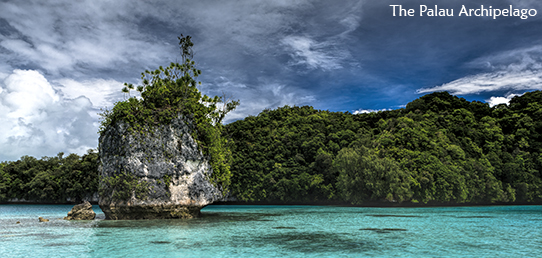 |
||
| The Palau archipelago is located right in the middle of the big blue of the Pacific Ocean and somewhere between the Philippines and Papua New Guinea as the crow flies. Being more than 2 hours away from the next larger mainland, 356 big as well as small islands are arising from the Philippine oceanic ridge. Palau’s densely wooded rock islands remind of giant green mushrooms popping through the waterline. Many of them are accomodating stand-alone ecosystems, for example a world wide small unique marine lake where thousands of golden jellyfish are swimming to the beat of the shining sun. | ||
| Fireworks on the other Side of the World | ||
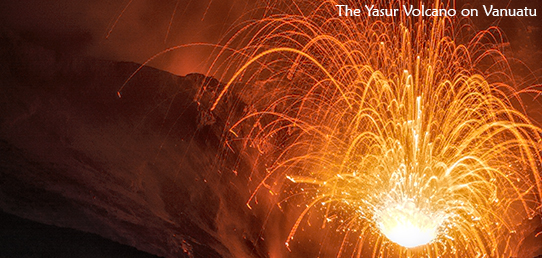 |
||
| The Vanuatu archipelago is located about 2000km in the east of Australia and is said to be one of the places with the biggest lust for life in the world. All islands’ existence is due to the high volcanic activity of circum-Pacific Ring of Fire and on Tanna Island the permanently active volcano Yasur gives an impressive example what that means for life and nature. When carefully getting closer then Yasur let’s you sit on its shoulder and shows you a real-life experience of the biggest force of nature as it is erupting up to 500 times a day and shooting dozens of lava bullets through the sky every time anew. | ||
